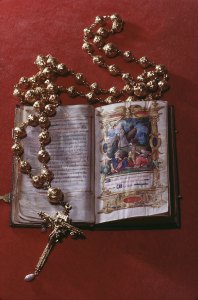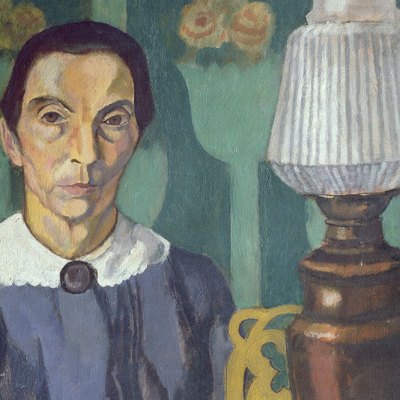According to legend, Arundel Castle was built by the mythical giant-slaying hero Bevis of Hampton, and named after his magical horse. According to historians, however, it dates to 1067 and was established by Roger de Montgomery, first Earl of Shrewsbury and of Arundel. It has belonged to the Fitzalan-Howards and their forebears for the past 850 years or so, and has been the seat of the Dukes of Norfolk for a considerable portion of that time, though it was briefly confiscated by Elizabeth I for the role the 4th Duke had played in the Ridolfi plot, whereby he planned to marry Mary, Queen of Scots, murder Liz, and take the throne of England. She, instead, had the Duke beheaded.
Last week it was broken into. At 10.30pm on Friday 21 May, having reopened to the public only a few days earlier, the burglar alarms sounded. Though police reached the scene within minutes (apparently), the brigands had vanished, leaving nothing behind them but a burned out 4×4 saloon car in nearby Barlavington. The display case containing the most prized and famous treasures of Arundel, a collection of relics belonging to that same Mary, Queen of Scots who had almost married into the family, had been smashed and gutted, many of its contents taken.
Photo: Sussex Police

The display case stands in the castle’s famous Dining Room, and is easily missed by those who don’t know what they’re looking for. No mere canteen, the room was originally a medieval chapel, and beneath the high, vaulted ceiling a table is permanently laid for dessert exactly as it was at the visit of Queen Victoria in 1846, whose coronation homage chair sits there proudly on display. It was ignored by the thieves. So too were the three Canalettos in the small drawing room next door. Beyond them you’ll find a Van Dyck, a Rubens, a Gainsborough and a Reynolds. Even the magic sword of Bevis of Hampton, Morglay. By all accounts they remain untouched.
There can be little doubt that this was a targeted hit. Commissioned, perhaps, by a villainous international collector, or a rabid fan of Saoirse Ronan, or a maniacal Scottish nationalist – maybe even some unholy cocktail of the three. It is heartbreaking news, with only the slight consolation that, if stolen to order, the Mary, Queen of Scots treasures are not likely to be melted down for their value as scrap or destroyed to cover the tracks of the thieves.
The rosary beads and prayer book belonging to Mary, Queen of Scots on display at Arundel Castle, Sussex in January 1968. Photo: RDImages/Epics/Getty Images

The major loss, as widely reported, is a rosary – and not just any rosary. Beautifully and ornately crafted in gold and enamel, the beads were carried by Mary during her own execution at Fotheringhay Castle in 1588. She bequeathed them to Anne, Countess of Arundel, the wife of Sir Philip Howard, and they have remained in the Howard family ever since. Sussex Police has also confirmed the theft of ‘several coronation cups given by the Sovereign to the Earl Marshal of the day, and other gold and silver treasures.’ Though given less attention, these unspecified extra pieces are at a much higher risk of destruction.
Few plate coronation cups survive. Once a mainstay of the ceremony, the high value of the metals and increasing scarcity of the skill required to produce them has seen their significance wane from Victoria’s crowning onwards, and over the centuries theft, politics, greed and philistinism have seen many sent to the furnace. Though the Duke of Norfolk holds the inherited position of Earl Marshal, organiser of the coronation ceremony (and might therefore be expected to have accrued a surplus), by the end of the 1930s Arundel held only three surviving examples in gold, each given by a monarch to a Duke of Norfolk, and each engraved with the relevant royal crest and cipher. The oldest, by the goldsmith Thomas Farrer, was presented to the 8th Duke in 1727–28 by George II; the next dates to 1761–62 by Gurney & Co., given to the 9th Duke by George III. While both of these are of a simple form, with a domed cover and a pair of handles, the third cup is tall, distinctive and slender, and was provided for the coronation of George IV in 1821 for the 12th Duke. An earlier gold cup, given to the 7th Duke at the Coronation of James II in 1685, has long since gone. The surviving cups have no connection to Mary, and there is every reason to fear they could meet the same fate.
I have made enquiries both with the castle and Sussex Police, but nobody is yet willing to elaborate on the ‘other silver and gold items’ that have been lost. Other treasures usually contained within the cabinet, according to the castle guide book, included a second set of pomander rosary beads , also 16th century, and next to them a gold cross purchased by the Howards from a Benedictine monk in Paris in 1696; it had supposedly belonged to Mary herself, who gifted it to John Feckenham, the last Abbot of Westminster, while he was imprisoned in the Tower of London between 1560 and 1584.
Also previously kept in the cabinet was Mary’s illustrated prayer book, which she had given to Lord Herries in 1568 when she sought refuge at his residence in Terregles after the Battle of Langside. Circulated by police, an image of the cabinet ‘just a few days before the burglary’ seems to show the cross and the second rosary, but doesn’t appear to include the prayer book – so we must hope that remains at Arundel. Sussex Police confirmed to me that that the photograph does not actually depict the contents at the time of the robbery, however. At this stage, all bets are off.
The value of the lost items – the value bandied about in the headlines, at least – is £1 million. Of course, this is an arbitrary sum; the real value is beyond reckoning. These are priceless treasures, and the cultural loss is huge.
Brice Stratford is an actor, writer and historian. He is artistic director of the Owle Schreame, a historical theatre company.



